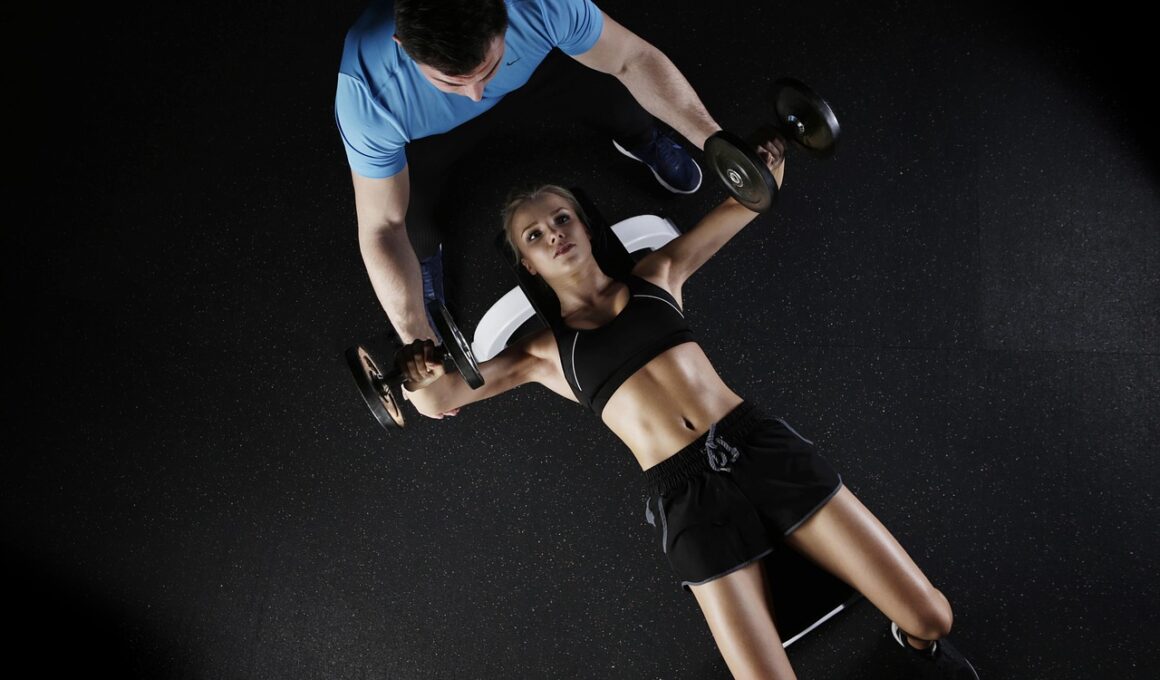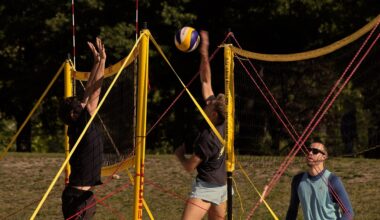Benefits of Plyometric Training for Seniors: Enhancing Strength and Agility
Plyometric training offers valuable advantages for seniors, particularly in boosting strength and agility. This dynamic exercise should not be underestimated, as it develops muscle power through explosive movements. Plyometrics differ from traditional strength training by emphasizing quick, short bursts of energy. For older adults, incorporating these exercises into a fitness routine can lead to improved coordination. Enhanced coordination helps seniors navigate daily activities safely by allowing them to respond quicker to changes in their environment. Furthermore, increased strength leads to better mobility. As people age, muscle mass and strength naturally decline, leading to decreased activity levels. By engaging in plyometric workouts, seniors can counteract this decline effectively. Another essential benefit of plyometric training is increased bone density, which often becomes a concern for older individuals. Strengthening bones through weight-bearing exercises can help prevent fractures and osteoporosis. It is crucial to start with appropriate modifications when introducing these exercises. Senior fitness should always focus on safety and well-being while progressively challenging participants. With consistent practice, seniors will experience a notable enhancement in their overall physical health and vitality, setting the stage for a more active lifestyle.
The focus on balance is another critical aspect of plyometric training for seniors. Enhancing balance can significantly reduce the risk of falls and injuries. With age, maintaining stability becomes increasingly vital, as falls are one of the leading causes of injury among older adults. Plyometric exercises such as box jumps or lateral hops contribute to this balance improvement. These exercises require fine motor control and playful engagement of the supportive muscles around the joints. As seniors practice and master these skills, their confidence can grow. Increased confidence during physical activities translates to more independence in daily living. By feeling more secure in their movements, seniors might participate more readily in social and recreational activities. Furthermore, incorporating plyometrics can provide a change of pace to an otherwise mundane fitness routine. Variety promotes adherence to exercise, as it prevents boredom. As people grow older, it is essential to find joy in physical activity. Ensuring that exercises feel lively can maximize engagement and effectiveness. Exercising in senior groups can also enhance these experiences. This way, participants can support one another, share laughs, and create lasting friendships through shared fitness journeys.
Moreover, plyometric training can greatly enhance muscular endurance, a critical component for older adults. Maintaining stamina is crucial for completing daily tasks and participating in social activities. Plyometric workouts often incorporate high-intensity intervals that challenge cardiovascular systems while building strength. Engaging the whole body through dynamic movements ensures that various muscle groups work harmoniously. Sustained engagement promotes better blood circulation, leading to better overall health. Additionally, incorporating plyometrics can facilitate weight management. As older adults strive to maintain a healthy weight, plyometrics burn calories efficiently. The intensity and power required for these exercises yield results in shorter periods. This efficiency can be appealing for seniors facing time constraints or wanting to maximize their workouts. Furthermore, muscle engagement elevates metabolism, which helps in sustaining optimal weight levels. A healthy weight is associated with lower risks of chronic diseases such as diabetes and heart disease. Alongside proper nutrition, plyometric training can play an integral role in achieving these goals. Overall, it is vital to emphasize a holistic approach to health that combines regular exercise with nutritious dietary choices for older adults.
Psychological Benefits of Plyometric Training
In addition to physical improvements, engaging in plyometric training can offer significant psychological benefits for seniors. Regular exercise releases endorphins, which promote feelings of happiness and contentment. This natural mood booster is especially important for older adults, who may face loneliness or depression. By participating in group classes focused on plyometrics, seniors can also foster social connections that combat feelings of isolation. These connections can contribute to a healthier mindset and overall well-being. Having a supportive community enhances emotional resilience. Over time, the combination of physical vigor and positive interactions can minimize anxiety levels. Participants in plyometric sessions often experience enhanced confidence in their abilities. As seniors gain strength and improve agility, they may feel a renewed sense of accomplishment. These victories are not limited to fitness achievements; they ripple into other aspects of life. With improved mental health, seniors are more inclined to engage in social and community events. Increased participation cultivates a sense of purpose and belonging, ultimately enriching seniors’ lives considerably. By embracing plyometrics, older adults embark on a fulfilling journey that serves their body and mind.
Furthermore, it is essential to tailor plyometric training to meet the unique needs of seniors. Safe execution of these exercises should always be prioritized. Modifications can be utilized to ensure accessibility. Seniors may perform low-impact variations using resistance bands or soft surfaces to decrease joint strain. This adaptation allows individuals to engage safely, enhancing motivation without risking injury. Additionally, having a qualified instructor is paramount in guiding seniors safely through plyometric routines. Proper instruction ensures correct form and technique, fostering an emphasis on effective movement patterns. By investing in skilled professionals, facilities can enhance the quality of their senior programs. As seniors gain expertise, they can gradually increase the intensity or complexity of their plyometric routines. This progressive approach ensures continuous adaptations and improvements in their physical capabilities. Encouragement can further bolster these efforts. Family members and friends play a pivotal role in supporting older adults’ exercise endeavors. Such collective involvement not only solidifies relationships but also enhances motivation. A positive support system is vital in fostering a love for active living. Those embarking on this journey will appreciate the ongoing benefits as they enhance their fitness experience.
Getting Started with Plyometric Training
When starting plyometric training, seniors should consult healthcare providers or fitness professionals. Assessing individual health status is crucial for avoiding complications. A tailored plan should take into account the individual’s mobility level, strength, and any pre-existing conditions. Each participant should feel confident and prepared to embark on this new physical journey. Beginning with foundational exercises is beneficial. Simple movements such as standing calf raises, squats, or gentle bounds can help establish a strong base. Once seniors feel comfortable with these dynamics, they may progress to more complex exercises. Building progression allows individuals to improve gradually without feeling overwhelmed. Feedback from instructors is essential for making these adjustments. Monitoring progress should be an integral part of the training regimen. As seniors notice improvements in strength and agility, they may feel encouraged to push themselves further. Setting reasonable objectives can help keep motivation high throughout the process. The camaraderie experienced in group exercise settings can also keep spirits elevated. Regular classes create structured timeframes for exercise, ensuring seniors remain committed while sharing their accomplishments with others.
In conclusion, plyometric training significantly benefits seniors by enhancing strength, agility, balance, and muscular endurance. The psychological rewards of physical activity—such as improved mood and social interaction—are crucial for overall well-being. The tailored approaches ensure that older adults can engage safely in these dynamic exercises. Families and communities play a significant role in supporting seniors through this journey. The shared experience of learning, improving, and achieving creates bonds that enrich lives. Fostering a sense of belonging encourages older adults to embrace exercise as a vital part of their lives. Prioritizing health and fitness empowers seniors to maintain independence, freedom, and vitality. When older adults recognize the positive impact of their efforts, they are more likely to continue their fitness endeavors with enthusiasm. Through the incorporation of plyometrics, lasting changes can evolve in both body and mind. As lifelong learners, seniors should feel inspired to explore their physical potential. With commitment and a supportive environment, plyometric training can revolutionize their approach to fitness, ensuring they lead active and fulfilling lives. The journey toward better health begins with the first leap, and it’s never too late to start.
As discussions about elder fitness gains momentum, the importance of awareness surrounding plyometric benefits becomes pivotal. Society must prioritize creating opportunities for older adults to engage in effective training methods. Fitness centers, community programs, and educators should actively promote such exercises suited for seniors. By providing resources and information on safe practices, awareness can cultivate a culture of health within the aging population. Collaborations among healthcare providers, fitness professionals, and community organizations can raise awareness about the importance of plyometric training. Through such shared initiatives, misconceptions about aging and exercise can be challenged and transformed. Increasing accessibility areas for seniors and providing engaging classes can bolster interest and involvement. Overall, the path toward enhancing seniors’ physical fitness necessitates collaboration, awareness, and dedication to fostering inclusive environments where older adults thrive. Empowering seniors through plyometric training can lead to profound transformations in their physical capabilities, mental wellness, and abiding enthusiasm for life.


